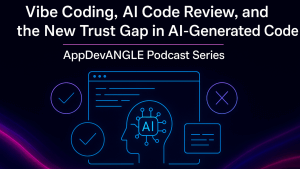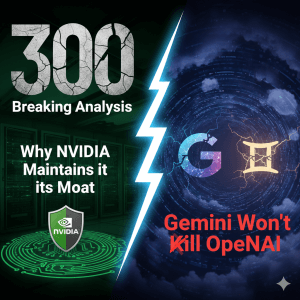At the recent Networking for AI Summit, I spoke with Shailesh Manjrekar, Chief Marketing and AI Officer, and Rached Blili, Distinguished Engineer, of Fabrix.ai, and special guest Zeus Kerravala, Principal Analyst at ZK Research, about how enterprises can move beyond AIOps and begin to operationalize AI with Fabrix.ai AgentOps.
According to Manjrekar, enterprises are transitioning from basic AIOps to Agentic Ops, described as utilizing AI agents (with guardrails) to observe, reason, and act across highly distributed networks. The shift is driven by exploding telemetry, multi-domain complexity (campus, data center, WAN, mobility/optical), and persistent skills gaps. Fabrix.ai positions itself as an Agentic AI Operational Intelligence Platform that evolved from AIOps into an agentic era, partnering with ecosystem leaders (e.g., Cisco, IBM) and serving enterprise, telco, and service provider customers.
Why is this needed
The panel outlined that the need for a solution such as AgentOps arises from several converging challenges in today’s networking environments. Data is fragmented across multiple systems, each with different schemas and update cadences, making it difficult to deliver the clean, normalized, and contextual inputs, such as topology, service maps, and semantic understanding of nodes and edges, that AI requires to be effective. Traditional AIOps tools help correlate alerts but often stop short at dashboards and recommendations, creating a “last-mile automation gap” where human operators must still piece together the remediation steps. At the same time, large language models introduce new risks: while powerful, they are stochastic and non-deterministic, and without strong domain-specific guardrails, they can generate hallucinations or overreach in ways that compromise operational safety. Finally, organizations are facing growing talent constraints, with teams expected to do more with fewer resources as senior engineers retire and infrastructures become increasingly distributed. Together, these forces underscore the importance of AgentOps in making AI-driven operations both practical and trustworthy.
Fabrix.ai’s Approach
Fabrix.ai frames its platform around three integrated “fabrics”:
- Data Fabric: Adapters/bots to ingest, normalize, and enrich multi-domain data (wireless, campus, DC, WAN, optical, mobility). Builds real-time topology and service maps; adds a semantic layer so agents “understand” entities and relationships.
- AI Fabric: Agentic layer that applies reasoning, clustering, and correlation on curated datasets; emphasizes determinism, precision, and guardrails over generic, creative LLM behavior.
- Automation Fabric: Closes the loop with policy- and guardrail-bounded actions, supporting human-in-the-loop/on-the-loop operations (confirmations, pre-execution impact summaries, least-privilege/least-agency).
They define AgentOps as the lifecycle of agents: prompt design, tool access (MCP/tooling), guardrails, experimentation/evaluation, deployment, continuous feedback (including RLHF), and eventual retirement, treating agents as “digital workers” with governance.
What It Looks Like in Practice
- Cross-domain Root Cause Analysis to business impact: Example reference scenario: correlate WAN jitter/loss to a drop in e-commerce orders by tracing dependencies across Meraki/Catalyst/SD-WAN/ACI/UCS/VMware stacks, bridging network signals to application outcomes.
- Time-to-value and scale: Bot-centric integrations aim to move from POC to production in weeks (not months), improving signal-to-noise, auto-routing incidents to the right teams, and presenting guided investigative playbooks with suggested remediations.
- Risk controls: Agents operate within scoped access and explicit workflows; guardrails minimize blast radius if an agent misinterprets context.
- Adoption motion: Fabrix.ai highlights an AAA “Agentic AI Acceleration” program to simplify starts (framework + tokens + guardrails) and lower barriers for networking/telco/MSP teams new to AI.
Market Framing
We discussed the change from reactive AIOps to predictive and eventually autonomous operations. Claims suggest a shift from product-centric to workforce-centric value (augmenting teams with “digital SREs”) and a meaningfully larger addressable market. Regardless of exact sizing, the directional takeaway is that operational AI is becoming foundational, not adjunct.
Practical Advice & Buyer Considerations
During the conversation, Shailesh and Rached offer the following criteria that organizations should consider when selecting their Agentic AI providers.
- Data readiness & coverage: Which domains and vendors are natively supported? How are topology and service maps kept accurate in near-real time?
- Guardrails & governance: How are least-privilege/agency enforced? What approval chains and rollback paths exist? How are actions audited?
- Agent lifecycle tooling: Is there an Agent Studio for design, testing, evaluation, and retirement? How is feedback (including human) captured to improve agents?
- Time to value: Typical integration timelines? Evidence of weeks-not-months deployments; reference architectures (e.g., Cisco Validated) relevant to your stack.
- Outcome linkage: Can the platform tie network signals to business KPIs (e.g., order completion, session quality) to prioritize actions and demonstrate ROI?
- Operational model: How does the platform support human-in-the-loop today while enabling a glide path to more autonomy where appropriate?
Our ANGLE
Fabrix.ai articulates a coherent AgentOps blueprint: curate high-fidelity context, apply agentic reasoning with guardrails, and execute governed actions that shorten MTTR and free experts for higher-value work. For organizations struggling with tool sprawl, data silos, and shifting talent dynamics, their AgentOps approach provides a practical path from reactive dashboards to proactive, safely automated operations, provided the necessary foundations (data quality, governance, and cross-domain coverage) are in place.
For more information on Fabrix.ai to move beyond AIOps, please visit their website



